WARRIOR OF THE LOST DRIVE-IN: An Interview With David Worth, Part 2
The second part of Schlockmania's interview with David Worth reveals that Part 1 was just the tip of the iceberg. This installment features exciting tales of his work with Jean Claude Van Damme, Cynthia Rothrock and Lorenzo Lamas, plus the story of how he made not one but two sequels to Shark Attack. You'll also learn about his thoughts on the transition from celluloid to digital video as well as the story behind a book he wrote about the cinematography of Citizen Kane. Read on for the continuing story of a journeyman who lived the filmmaking dream and survived to tell the oft-witty tales... You worked with Jean Claude Van Damme twice - BLOODSPORT and KICKBOXER - and have shot a lot of martial arts fare since then. What are the challenges of shooting this kind of film? And do you have any good JCVD stories?DW: For me the challenge in doing martial arts was to make sure that all of the work and coverage on the various fight scenes could be accomplished within the schedule and budget of the production. I was able to accomplish this by being a student of Stanley Kubrick's films and following his example of "building all of the lighting into the sets or locations". As I mentioned earlier, I had first used this amazing lighting style on BRONCO BILLY and it enabled Clint and the production to finish: Two And a Half Weeks Under Schedule!
You worked with Jean Claude Van Damme twice - BLOODSPORT and KICKBOXER - and have shot a lot of martial arts fare since then. What are the challenges of shooting this kind of film? And do you have any good JCVD stories?DW: For me the challenge in doing martial arts was to make sure that all of the work and coverage on the various fight scenes could be accomplished within the schedule and budget of the production. I was able to accomplish this by being a student of Stanley Kubrick's films and following his example of "building all of the lighting into the sets or locations". As I mentioned earlier, I had first used this amazing lighting style on BRONCO BILLY and it enabled Clint and the production to finish: Two And a Half Weeks Under Schedule!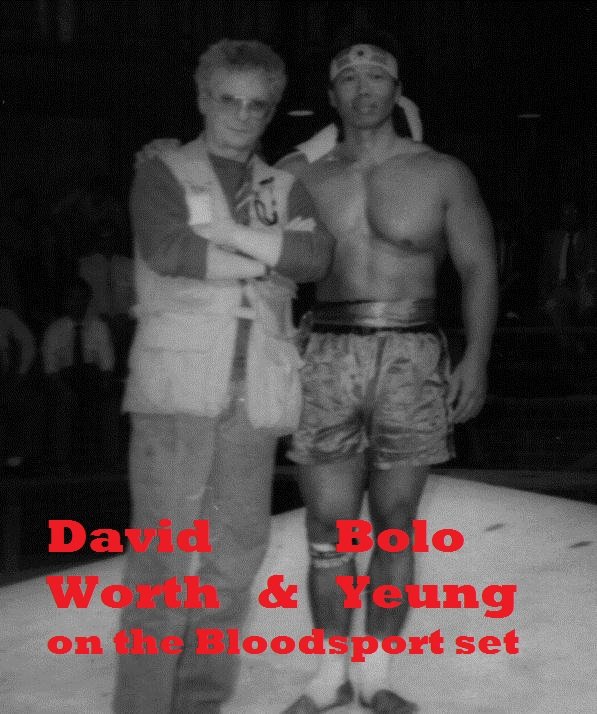 I used this same technique in lighting the large Kumite set in BLOODSPORT. By doing so and utilizing three Panavision cameras, I was able to average over 70 set ups a day and one day set a person record of 93 set ups that stood for nearly 10 years.JCVD was very young. BLOODSPORT was his first film and he was also very highly strung like a race horse, mainly due to constantly training and dieting to maintain his famous "cut". It surprised me to hear him yell at various crew members but I understood and wrote it off to the strain that the training and dieting was putting on him. However, after working for Mr. Eastwood for a year and never hearing him even raise his voice to anyone, it did give me pause. JCVD was and still is an amazing performer. He's been through a lot, come out on top and is still the hardest working guy on any production that he's a part of.
I used this same technique in lighting the large Kumite set in BLOODSPORT. By doing so and utilizing three Panavision cameras, I was able to average over 70 set ups a day and one day set a person record of 93 set ups that stood for nearly 10 years.JCVD was very young. BLOODSPORT was his first film and he was also very highly strung like a race horse, mainly due to constantly training and dieting to maintain his famous "cut". It surprised me to hear him yell at various crew members but I understood and wrote it off to the strain that the training and dieting was putting on him. However, after working for Mr. Eastwood for a year and never hearing him even raise his voice to anyone, it did give me pause. JCVD was and still is an amazing performer. He's been through a lot, come out on top and is still the hardest working guy on any production that he's a part of.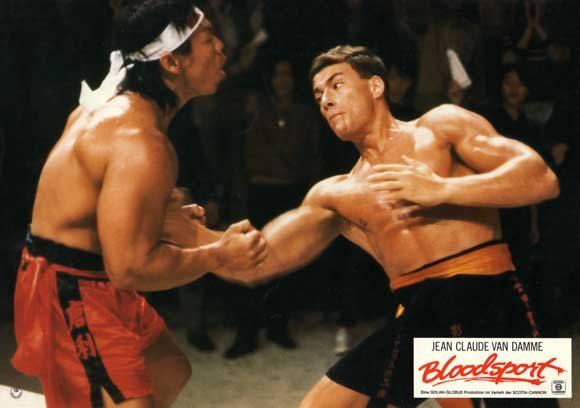 You're credited as both cinematographer and co-director on KICKBOXER. How did you and your co-director on that film, Mark DiSalle, divide up the work?DW: Mark DiSalle was the co-writer of the script and the producer of the film. He no more directed KICKBOXER than he did BLOODSPORT, which he also produced. He informed me a week before the Main Titles were to go on KICKBOXER that he was "sharing" my credit with me. I assumed that since The Main Titles read: "A Mark DiSalle Production" "Co Written by Mark DiSalle" and "Produced by Mark DiSalle" that he felt no one would realize that he'd been involved unless he also stuck his name into the director's credit. I can show anyone who's interested my storyboards that match scene for scene & shot for shot what I directed in KICKBOXER!
You're credited as both cinematographer and co-director on KICKBOXER. How did you and your co-director on that film, Mark DiSalle, divide up the work?DW: Mark DiSalle was the co-writer of the script and the producer of the film. He no more directed KICKBOXER than he did BLOODSPORT, which he also produced. He informed me a week before the Main Titles were to go on KICKBOXER that he was "sharing" my credit with me. I assumed that since The Main Titles read: "A Mark DiSalle Production" "Co Written by Mark DiSalle" and "Produced by Mark DiSalle" that he felt no one would realize that he'd been involved unless he also stuck his name into the director's credit. I can show anyone who's interested my storyboards that match scene for scene & shot for shot what I directed in KICKBOXER! You worked with martial arts pro Cynthia Rothrock twice on LADY DRAGON and its sequel. Could you offer a few thoughts on working with this straight-to-video action star?DW: Cynthia was and still is the very best! She had started out in Hong Kong where they treat the stunt performers like disposable cups so she was as tough as they come! All day every day in Indonesia she was fighting, falling and doing all of her own stunts in the filth and the grime without even the courtesy of craft service... and I never heard a single gripe or complaint!!! She was any director's dream! Every so called "star" sitting comfortably in an air conditioned soundstage and complaining that their "Latte wasn't done right" could take lessons in professionalism under pressure from this straight-to-video action star!!!
You worked with martial arts pro Cynthia Rothrock twice on LADY DRAGON and its sequel. Could you offer a few thoughts on working with this straight-to-video action star?DW: Cynthia was and still is the very best! She had started out in Hong Kong where they treat the stunt performers like disposable cups so she was as tough as they come! All day every day in Indonesia she was fighting, falling and doing all of her own stunts in the filth and the grime without even the courtesy of craft service... and I never heard a single gripe or complaint!!! She was any director's dream! Every so called "star" sitting comfortably in an air conditioned soundstage and complaining that their "Latte wasn't done right" could take lessons in professionalism under pressure from this straight-to-video action star!!!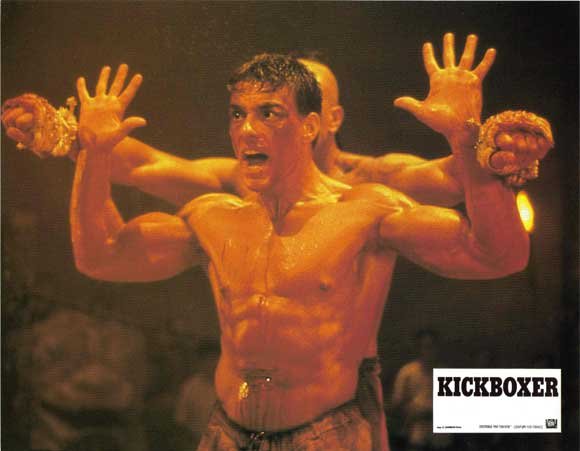 At the end of the 1990's, you directed several episodes of the AIR AMERICA t.v. series with Lorenzo Lamas. How did you get this job and what were the major differences of working in television as opposed to working on feature films?DW: I got the gig by networking & networking & networking with several people involved with the production company Franklin / Waterman that were doing a series of these modest budget TV series. Trust me when I tell you that this was "The Most Civilized Job" that I have ever had as a director and could only hope the the "gods of production" would smile and send me such a gig again...
At the end of the 1990's, you directed several episodes of the AIR AMERICA t.v. series with Lorenzo Lamas. How did you get this job and what were the major differences of working in television as opposed to working on feature films?DW: I got the gig by networking & networking & networking with several people involved with the production company Franklin / Waterman that were doing a series of these modest budget TV series. Trust me when I tell you that this was "The Most Civilized Job" that I have ever had as a director and could only hope the the "gods of production" would smile and send me such a gig again... We only shot 5 days a week and then I spent the weekends with my family, something that I was never able to do when working 6 days a week at some distant location on the planet. I'm a very organized director so for me this was a dream. Yes, we often had to do 9 or 10 pages a day but by using 3 cameras and doing 2 set ups, you already have six (6) different pieces of coverage for the editors. Ask me sometime and I'll tell you how I was able to do 20 pages a day for 2 days with no overtime on this production!You directed not one but two of the films in the SHARK ATTACK series (parts 2 and 3). What are the most enjoyable and difficult aspects of doing monster movies like these?
We only shot 5 days a week and then I spent the weekends with my family, something that I was never able to do when working 6 days a week at some distant location on the planet. I'm a very organized director so for me this was a dream. Yes, we often had to do 9 or 10 pages a day but by using 3 cameras and doing 2 set ups, you already have six (6) different pieces of coverage for the editors. Ask me sometime and I'll tell you how I was able to do 20 pages a day for 2 days with no overtime on this production!You directed not one but two of the films in the SHARK ATTACK series (parts 2 and 3). What are the most enjoyable and difficult aspects of doing monster movies like these?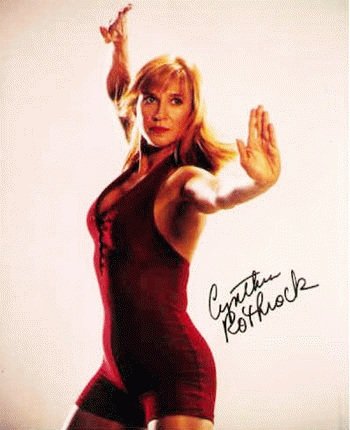 DW: Of course, there were so many unanswered questions at the end of SHARK ATTACK 2 that there had to be a SHARK ATTACK 3!!! The difficult aspects of these productions were attempting to do believable shark attack movies on a limited budget in South Africa and Bulgaria! However, I was able to solve the problems inherent in the original SHARK ATTACK production: namely, that it was a movie named SHARK ATTACK that basically didn't have any shark attacks in it!!!On the first film they had created a 2000 pound mechanical shark and towed it out into the ocean where they expected that it would be able to do all of its mechanical tricks: WRONG! First, having learned from Mr. Spielberg's JAWS experience, you absolutely NEVER go out into the open ocean to do any 1st unit filming. You send a 2nd unit out to shoot the boats or the fins going left and right and turning etc. etc. etc. Then you simulate being out in the ocean while the heroes and their hero boat are safely tied to the dock.
DW: Of course, there were so many unanswered questions at the end of SHARK ATTACK 2 that there had to be a SHARK ATTACK 3!!! The difficult aspects of these productions were attempting to do believable shark attack movies on a limited budget in South Africa and Bulgaria! However, I was able to solve the problems inherent in the original SHARK ATTACK production: namely, that it was a movie named SHARK ATTACK that basically didn't have any shark attacks in it!!!On the first film they had created a 2000 pound mechanical shark and towed it out into the ocean where they expected that it would be able to do all of its mechanical tricks: WRONG! First, having learned from Mr. Spielberg's JAWS experience, you absolutely NEVER go out into the open ocean to do any 1st unit filming. You send a 2nd unit out to shoot the boats or the fins going left and right and turning etc. etc. etc. Then you simulate being out in the ocean while the heroes and their hero boat are safely tied to the dock.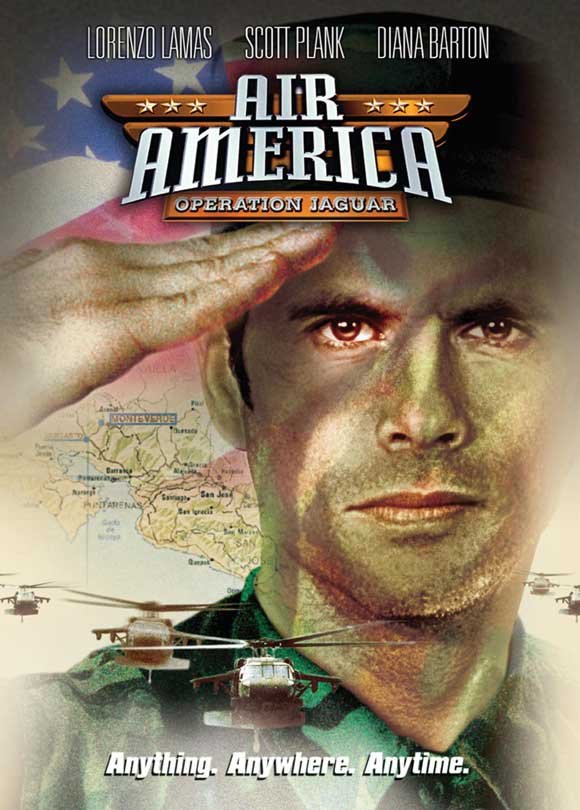 Second, from watching how the outstanding 2nd Unit Director Glenn Randall had handled the Doberman attack in REMO WILLIAMS, I knew exactly how to solve the shark attack issue in order to make a shark attack work you need three things:1: You need a large full 20 foot + Shark Replica that can be towed by a jet-ski near or by the heroes and their boat to show it's actual size.2. You need a set of shark fins that can be operated by stuntmen underwater that can go left or right, turn around and come directly at the camera or the victim.
Second, from watching how the outstanding 2nd Unit Director Glenn Randall had handled the Doberman attack in REMO WILLIAMS, I knew exactly how to solve the shark attack issue in order to make a shark attack work you need three things:1: You need a large full 20 foot + Shark Replica that can be towed by a jet-ski near or by the heroes and their boat to show it's actual size.2. You need a set of shark fins that can be operated by stuntmen underwater that can go left or right, turn around and come directly at the camera or the victim. 3. You need and in fact MUST HAVE several large articulated shark biting heads that can be operated in shallow water by stuntmen so that you can get all the gory close ups of the victims being attacked that are very necessary in a shark attack film!Of course the most enjoyable aspects of SHARK ATTACK 3 was John Barrowman's infamous line. Just Google "best film line" and you can watch John say it in all of its glory!In recent years, you've made the move from shooting film to shooting HD video on a number of projects. What are your thoughts on the shift from film to video?
3. You need and in fact MUST HAVE several large articulated shark biting heads that can be operated in shallow water by stuntmen so that you can get all the gory close ups of the victims being attacked that are very necessary in a shark attack film!Of course the most enjoyable aspects of SHARK ATTACK 3 was John Barrowman's infamous line. Just Google "best film line" and you can watch John say it in all of its glory!In recent years, you've made the move from shooting film to shooting HD video on a number of projects. What are your thoughts on the shift from film to video? DW: Viva La Revolution! After I did my first two HD films back to back in the mid 2000's, I was an instant convert to this amazing new technology. Why? Because of several reasons, the first and most important being the actor's performance!What happens every 10 minutes on a film shoot? Someone shouts "Changing a mag..." and everything stops for several minutes while a magazine of film is changed. One actor takes a call, another calls his wife, another calls his agent, makeup/wardrobe/continuity all have questions and it's a while before you can get the actors' creative juices flowing again...The main difference that I immediately loved about HD was that I did not have a 10 minute magazine. I had a 55 minute tape & today you have a memory chip that can capture for hours. By NOT breaking the actor's concentration and by using two cameras with zoom lenses, at the end of a long take I would say to my operators "Don't cut
DW: Viva La Revolution! After I did my first two HD films back to back in the mid 2000's, I was an instant convert to this amazing new technology. Why? Because of several reasons, the first and most important being the actor's performance!What happens every 10 minutes on a film shoot? Someone shouts "Changing a mag..." and everything stops for several minutes while a magazine of film is changed. One actor takes a call, another calls his wife, another calls his agent, makeup/wardrobe/continuity all have questions and it's a while before you can get the actors' creative juices flowing again...The main difference that I immediately loved about HD was that I did not have a 10 minute magazine. I had a 55 minute tape & today you have a memory chip that can capture for hours. By NOT breaking the actor's concentration and by using two cameras with zoom lenses, at the end of a long take I would say to my operators "Don't cut 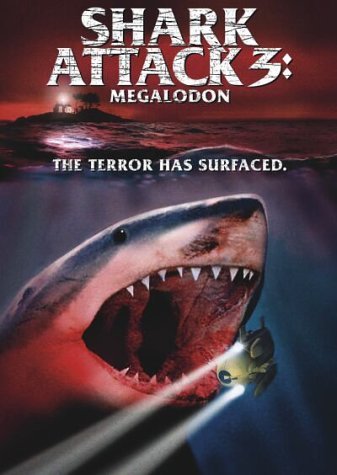 the cameras, zoom in for a tighter angle of additional coverage. Got it? OK. Actors, take a deep breath and go back to the top of the scene. Ready... OK... Action!" I was able to keep the actors in the moment and get a lot more work done each day.After doing those two HD films I did a price comparison of shooting 35mm, 16mm or HD & what I discovered was that the formula for shooting HD instead of 35mm film was that you were able to: "Get 3 times as much material for the editing room in about 1/2 of the production time and at 1/10 of the coat!"What's not to like about that?!You have also done a lot of teaching in film schools in recent years. How would you describe your approach to teaching cinematography - and what would you say is the most important element of an education in filmmaking?DW: I try to impart to all of my students that they owe an immense debt to all the filmmakers of the last century who were thinking "outside the box" like: D.W. Griffith, Sergei Eisenstein, Abel Gance, John Ford, Orson Welles, Vittorio DeSica, Akira Kurosawa, Alain Resnais, Jean-Luc Godard, John Cassavetes, Ingmar Bergman, Alfred Hitchcock, Stanley Kubrick, etc. etc. etc.
the cameras, zoom in for a tighter angle of additional coverage. Got it? OK. Actors, take a deep breath and go back to the top of the scene. Ready... OK... Action!" I was able to keep the actors in the moment and get a lot more work done each day.After doing those two HD films I did a price comparison of shooting 35mm, 16mm or HD & what I discovered was that the formula for shooting HD instead of 35mm film was that you were able to: "Get 3 times as much material for the editing room in about 1/2 of the production time and at 1/10 of the coat!"What's not to like about that?!You have also done a lot of teaching in film schools in recent years. How would you describe your approach to teaching cinematography - and what would you say is the most important element of an education in filmmaking?DW: I try to impart to all of my students that they owe an immense debt to all the filmmakers of the last century who were thinking "outside the box" like: D.W. Griffith, Sergei Eisenstein, Abel Gance, John Ford, Orson Welles, Vittorio DeSica, Akira Kurosawa, Alain Resnais, Jean-Luc Godard, John Cassavetes, Ingmar Bergman, Alfred Hitchcock, Stanley Kubrick, etc. etc. etc. 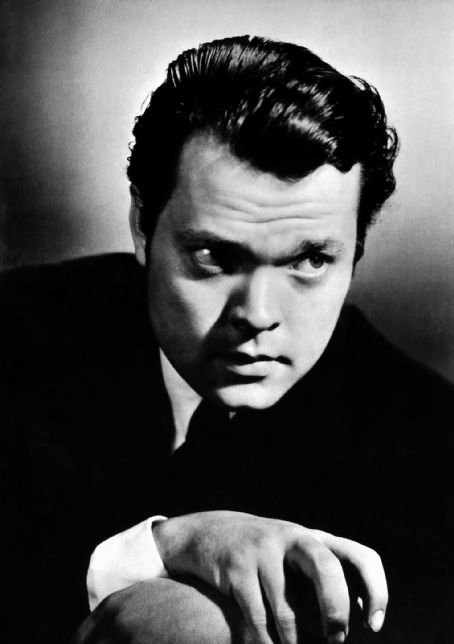 They should as filmmakers be aware of the history of film but they also need to embrace all of the new and future technology that we have today that has streamlined all aspects of film production and democratized the art & craft of Filmmaking!Of course, nearly every film student would like to become a part of main stream filmmaking and do films with J.J. Abrams. As teachers we would love to see that happen. But if it doesn't... today anyone on the planet can find access to an HD camera and a non-linear editing system like Final Cut Pro and Ta Da! Now, they have become their own "studio" where they can get their friends together and "green light" their own productions! But first they must find or create a compelling script!Viva La Revolution!You've also written a textbook entitled THE CITIZEN CANE CRASH COURSE IN CINEMATOGRAPHY. Could you please describe the premise behind this book and how you use it in your teaching?DW: When I began teaching, I was told that I needed to have something published. I was introduced to a publisher, Michael Wiese Productions, and since I had been directing I wanted to do a book about film directing. However, the publisher thought that since I had done two films with Clint Eastwood as a DP, that I should do a book about Cinematography. Eventually I
They should as filmmakers be aware of the history of film but they also need to embrace all of the new and future technology that we have today that has streamlined all aspects of film production and democratized the art & craft of Filmmaking!Of course, nearly every film student would like to become a part of main stream filmmaking and do films with J.J. Abrams. As teachers we would love to see that happen. But if it doesn't... today anyone on the planet can find access to an HD camera and a non-linear editing system like Final Cut Pro and Ta Da! Now, they have become their own "studio" where they can get their friends together and "green light" their own productions! But first they must find or create a compelling script!Viva La Revolution!You've also written a textbook entitled THE CITIZEN CANE CRASH COURSE IN CINEMATOGRAPHY. Could you please describe the premise behind this book and how you use it in your teaching?DW: When I began teaching, I was told that I needed to have something published. I was introduced to a publisher, Michael Wiese Productions, and since I had been directing I wanted to do a book about film directing. However, the publisher thought that since I had done two films with Clint Eastwood as a DP, that I should do a book about Cinematography. Eventually I 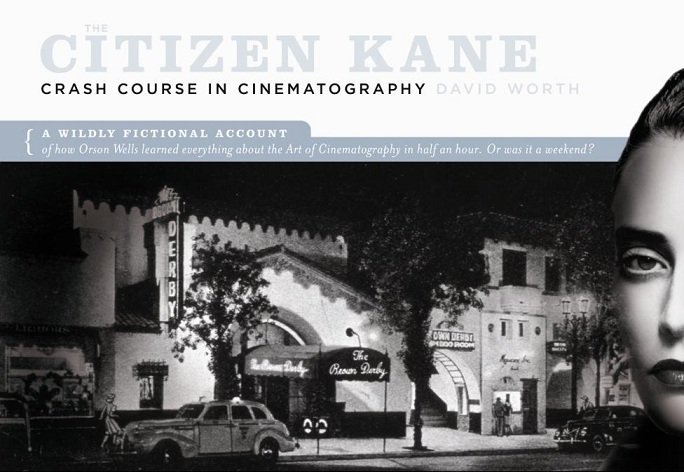 agreed and I asked them to give me the top 5 books ever done on the subject of cinematography. They did and when I went through them they all basically put me to sleep! In my opinion they were just too boring and technical.As I was doing my research, I came across a statement by Orson Welles who at some point when he was holding court said that: "I learned everything about the art of cinematography from the great cameraman Gregg Toland in half an hour..."Wow! That stopped me cold! Wouldn't everyone with today's demand for instant gratification love to be able to learn everything about Cinematography in just half an hour. Then I realized that Mr. Welles, as he was want to do, was exaggerating. That is was not half an hour it was probably a weekend... and knowing Mr. Welles' taste for food, drink, drugs, women and gambling... I fantasized that it was a very wild weekend!
agreed and I asked them to give me the top 5 books ever done on the subject of cinematography. They did and when I went through them they all basically put me to sleep! In my opinion they were just too boring and technical.As I was doing my research, I came across a statement by Orson Welles who at some point when he was holding court said that: "I learned everything about the art of cinematography from the great cameraman Gregg Toland in half an hour..."Wow! That stopped me cold! Wouldn't everyone with today's demand for instant gratification love to be able to learn everything about Cinematography in just half an hour. Then I realized that Mr. Welles, as he was want to do, was exaggerating. That is was not half an hour it was probably a weekend... and knowing Mr. Welles' taste for food, drink, drugs, women and gambling... I fantasized that it was a very wild weekend!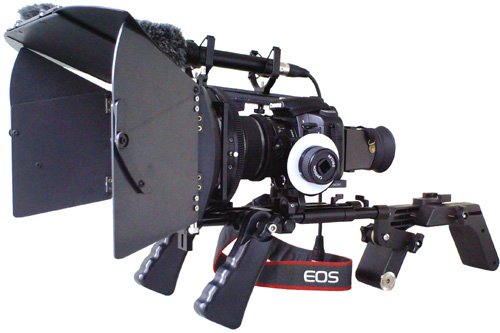 That was how I came up with my "wildly fictional" account of what happened during "THE CITIZEN KANE CRASH COURSE IN CINEMATOGRAPHY" as Mr. Toland attempted to give Mr. Welles the basics of cinematography and filmmaking. This book was created to mainly be a page turner, to keep the novice interested in cinematography by following the wild weekend of Mr. Welles & Mr. Toland and hopefully by entertaining them, encourage them to dig deeper into the subject if they were interested.Most recently, you directed a horror film entitled HARDHAT. You reportedly shot this film in an unusual way - using compact DSLR cameras and a crew of graduate students. What were the challenges of shooting a film in such an unorthodox style and how do you feel about the finished product?DW: I had been watching the DSLR's breaking into filmmaking and wanted to experience working with them. When this modest budgeted project began to take shape, I told the Producers that the only way to keep costs down was to use non SAG actors in front of the cameras and my grad students behind the cameras and to capture our film on DSLR's.
That was how I came up with my "wildly fictional" account of what happened during "THE CITIZEN KANE CRASH COURSE IN CINEMATOGRAPHY" as Mr. Toland attempted to give Mr. Welles the basics of cinematography and filmmaking. This book was created to mainly be a page turner, to keep the novice interested in cinematography by following the wild weekend of Mr. Welles & Mr. Toland and hopefully by entertaining them, encourage them to dig deeper into the subject if they were interested.Most recently, you directed a horror film entitled HARDHAT. You reportedly shot this film in an unusual way - using compact DSLR cameras and a crew of graduate students. What were the challenges of shooting a film in such an unorthodox style and how do you feel about the finished product?DW: I had been watching the DSLR's breaking into filmmaking and wanted to experience working with them. When this modest budgeted project began to take shape, I told the Producers that the only way to keep costs down was to use non SAG actors in front of the cameras and my grad students behind the cameras and to capture our film on DSLR's.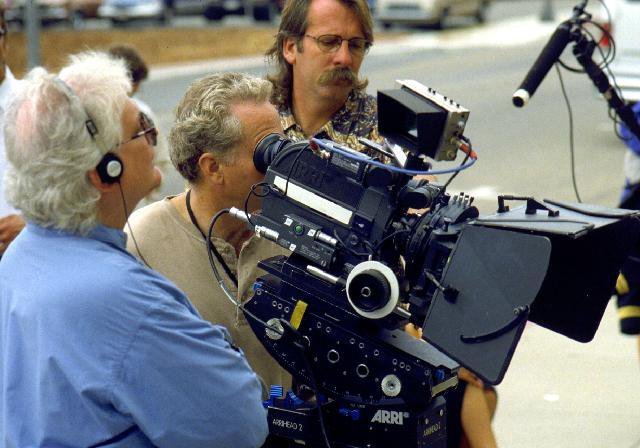 The film is not as yet completed due mainly to some unexpected legal issues that I will not go into but, as far as the production itself, I was thrilled with the performances of my first time cast, my grad student crew & the amazing DSLR 5D's and 7D's that we used.Example: On my first day of shooting, I had scheduled a 10 1/2 page scene involving 7 Actors. I got together with all of the actors and rehearsed several times prior to shooting. On the day our guerrilla crew and cast showed up on location , we began shooting around 8:30 am. We were shooting on a natural location with available light and with my cast ready to go and the two Cannon 7D's rolling we wrapped our 10 1/2 page first day in three and one half (3 &1/2) hours! That stands as an all time production record as far as my shooting days are concerned!You've shot films all over the world - Italy, Mexico, Hong Kong and Israel, just to name a few places. Which country was the most enjoyable to shoot in - and which was the most challenging?
The film is not as yet completed due mainly to some unexpected legal issues that I will not go into but, as far as the production itself, I was thrilled with the performances of my first time cast, my grad student crew & the amazing DSLR 5D's and 7D's that we used.Example: On my first day of shooting, I had scheduled a 10 1/2 page scene involving 7 Actors. I got together with all of the actors and rehearsed several times prior to shooting. On the day our guerrilla crew and cast showed up on location , we began shooting around 8:30 am. We were shooting on a natural location with available light and with my cast ready to go and the two Cannon 7D's rolling we wrapped our 10 1/2 page first day in three and one half (3 &1/2) hours! That stands as an all time production record as far as my shooting days are concerned!You've shot films all over the world - Italy, Mexico, Hong Kong and Israel, just to name a few places. Which country was the most enjoyable to shoot in - and which was the most challenging?![]() DW: My top crew experience was with Clint Eastwood. Outside the country, my top 3 crew were Hong Kong, Israel & Italy. The best place to stay was of course in Rome, Italy and the most challenging was Jakarta, Indonesia.I'll leave the final words to you - do you have anything you'd like to say to fans of your work or any future filmmakers?DW: To the fans of my work, I honestly feel that I have to apologize! I've done over 35 films but I can easily count the good scripts that I've had on one hand... and probably have some fingers left over! As far as future filmmakers, the hardest job in showbiz comes after typing the words "Fade In." What comes next? Until there is a script, nobody has a job! If you have the talent to write, DO IT. If you do not, find the next Paddy Chayefsky, David Mamet, Neil LaBute or Peter Shaffer and have an affair with them, marry them, give them an apartment, support them and do absolutely anything you can to get them on your team in order to have a script from this caliber of writer. Otherwise, you are doomed to a life of episodic television and low budget action films.
DW: My top crew experience was with Clint Eastwood. Outside the country, my top 3 crew were Hong Kong, Israel & Italy. The best place to stay was of course in Rome, Italy and the most challenging was Jakarta, Indonesia.I'll leave the final words to you - do you have anything you'd like to say to fans of your work or any future filmmakers?DW: To the fans of my work, I honestly feel that I have to apologize! I've done over 35 films but I can easily count the good scripts that I've had on one hand... and probably have some fingers left over! As far as future filmmakers, the hardest job in showbiz comes after typing the words "Fade In." What comes next? Until there is a script, nobody has a job! If you have the talent to write, DO IT. If you do not, find the next Paddy Chayefsky, David Mamet, Neil LaBute or Peter Shaffer and have an affair with them, marry them, give them an apartment, support them and do absolutely anything you can to get them on your team in order to have a script from this caliber of writer. Otherwise, you are doomed to a life of episodic television and low budget action films.


